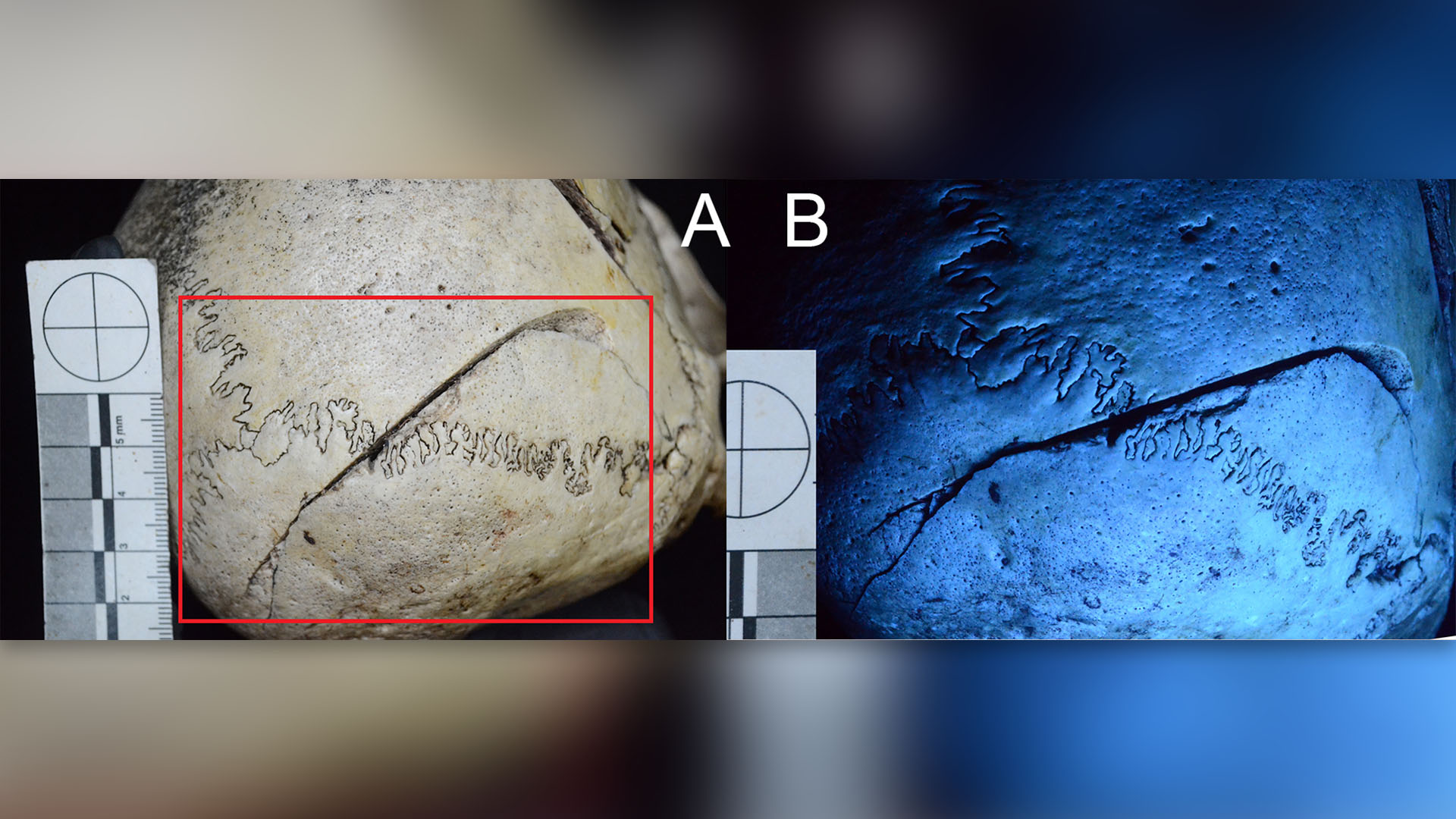Skull with 'execution-style wounds' suggests woman died due to enslavement or suspected sorcery in colonial Indonesia
The skull of a woman from colonial Indonesia bears sharp force trauma, possibly due to slavers or because she was seen as a sorcerer.

A possibly enslaved woman may have been executed with a sharp weapon in what is now the Papua province of Indonesia, a new study finds.
Only the skull of the victim is available for analysis, but it revealed that the woman was between 26 and 42 years old when she was killed.
"Multiple sharp force trauma injuries were identified on the frontal, temporal, and occipital bones of the cranium," the researchers wrote in a paper published Sept. 16 in the International Journal of Osteoarchaeology. The team used digital and ultraviolet photography to examine the injuries on the skull.
The woman lived in what scholars call Indonesia's "colonial period," a time between the 16th and mid-20th century when the country was controlled by European powers. The skull was found on Biak Island in 1935 by scientists from Airlangga University in Indonesia. The year and the word "Biak" (which may refer to the Biak people) is written on the skull, researchers noted in the study.
During the colonial period, Europeans went on slave raids and captured local people. The Dutch, who controlled Indonesia during much of this time period, practiced widespread enslavement.
Related: Plantation slavery was invented on this tiny African island, according to archaeologists
It's possible that the woman was killed as part of these raids, but "it is impossible to differentiate if the cranium analyzed in this study belonged to a victim of inter or intra-tribal warfare, or if they were killed as a slave" study lead author Rizky Sugianto Putri, a forensic anthropologist at Airlangga University, told Live Science in an email. "However, the execution-style wounds on the cranium support that the individual was kneeling or sitting and was not able to defend themselves actively."
Sign up for the Live Science daily newsletter now
Get the world’s most fascinating discoveries delivered straight to your inbox.
The team noted that female sorcerers known as "mon" were highly sought during raids. That raises the question as to whether this woman could have been a sorcerer.
The identity of her killers is also unclear. "We do not know who killed her. However, the sharp-force trauma wounds were consistent with a parang, a weapon commonly used by Papuan tribes in the colonial period," Sugianto Putri said.
Little research has been done on human remains in Indonesia that date to the colonial period. Putri hopes that this paper, and future research, will shed more light on how people lived and died during this period.

Owen Jarus is a regular contributor to Live Science who writes about archaeology and humans' past. He has also written for The Independent (UK), The Canadian Press (CP) and The Associated Press (AP), among others. Owen has a bachelor of arts degree from the University of Toronto and a journalism degree from Ryerson University.









